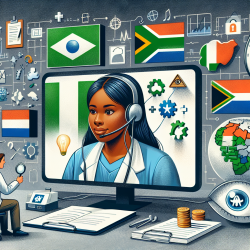Introduction
In the realm of special education, ensuring the holistic development of children is paramount. As a Special Education Director, it's crucial to integrate research findings into practice to enhance the well-being of students. A recent study, "Results from South Korea's 2018 Report Card on Physical Activity for Children and Youth," provides valuable insights that can be leveraged to promote physical activity among students. This blog explores how practitioners can apply these findings to improve their skills and encourage further research.
Understanding the Research
The 2018 Report Card from South Korea evaluated physical activity levels among children and youth using ten core indicators. The findings revealed both progress and areas needing improvement. Notably, while indicators like Active Transportation and Organized Sports Participation showed favorable changes, overall physical activity levels remained alarmingly low, receiving a grade of F.
Key Takeaways for Practitioners
Practitioners can draw several key takeaways from this research to enhance their approach:
- Advocate for Active Transportation: Encourage schools to promote walking or cycling to school. This not only improves physical health but also enhances mental well-being.
- Integrate Organized Sports: Facilitate participation in organized sports by collaborating with local sports clubs and creating inclusive programs that cater to diverse needs.
- Limit Sedentary Behaviors: Implement strategies to reduce screen time and promote active breaks during school hours.
- Enhance School Policies: Work with school administrators to develop and enforce policies that prioritize physical education and active play.
Encouraging Further Research
While the 2018 Report Card provides a comprehensive overview, it also highlights gaps in data, particularly regarding Active Play and Family and Peers indicators. Practitioners are encouraged to engage in further research to fill these gaps. By collaborating with researchers and leveraging national data, practitioners can contribute to a more nuanced understanding of physical activity behaviors in children and youth.
Conclusion
Integrating the findings from South Korea's 2018 Report Card into practice can significantly enhance the physical activity levels of children and youth. By advocating for active transportation, integrating organized sports, limiting sedentary behaviors, and enhancing school policies, practitioners can create a supportive environment that fosters physical well-being. Furthermore, engaging in further research will ensure a comprehensive understanding of these behaviors, ultimately leading to more effective interventions.
To read the original research paper, please follow this link: Results from South Korea's 2018 Report Card on physical activity for children and youth.










